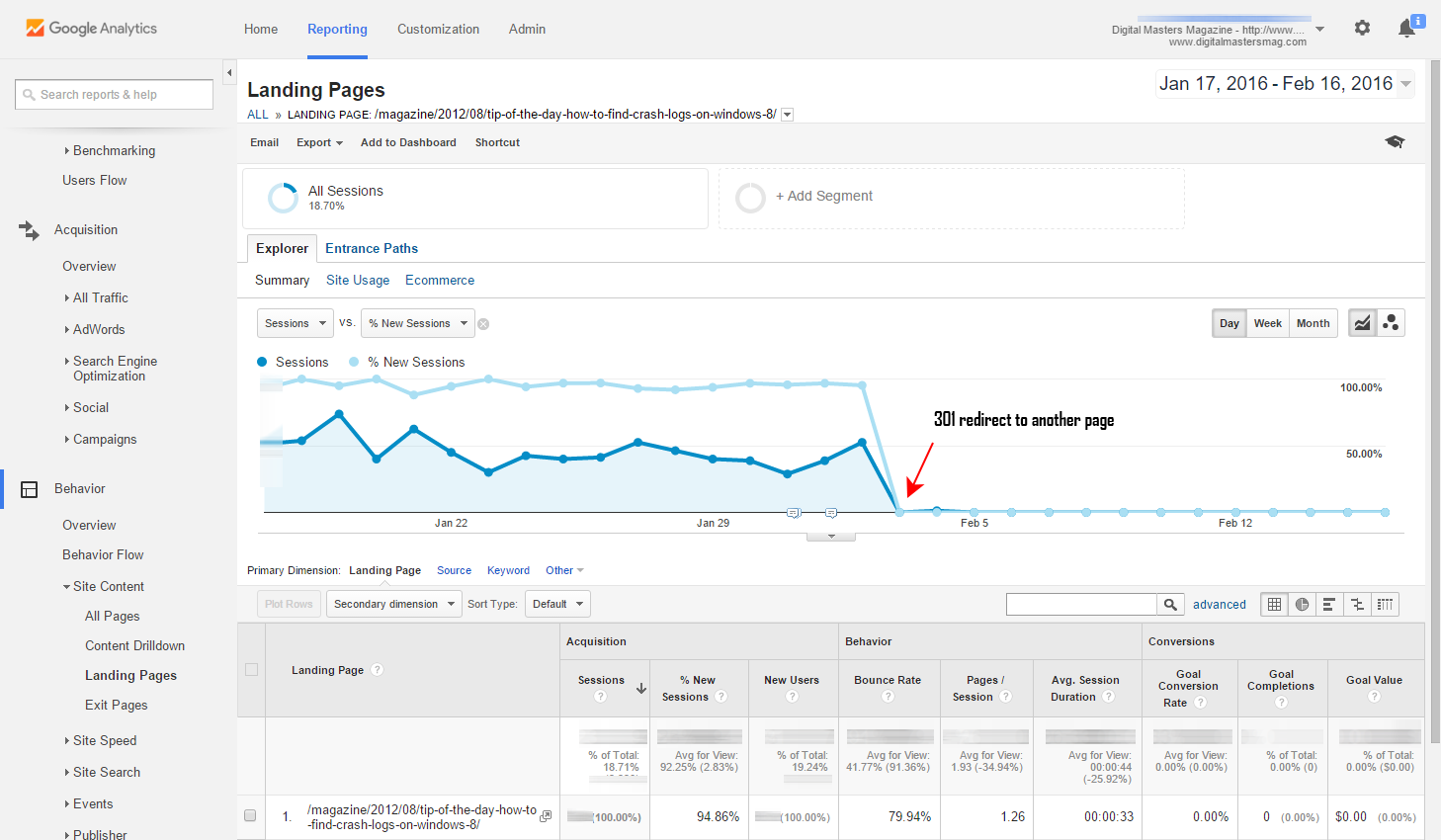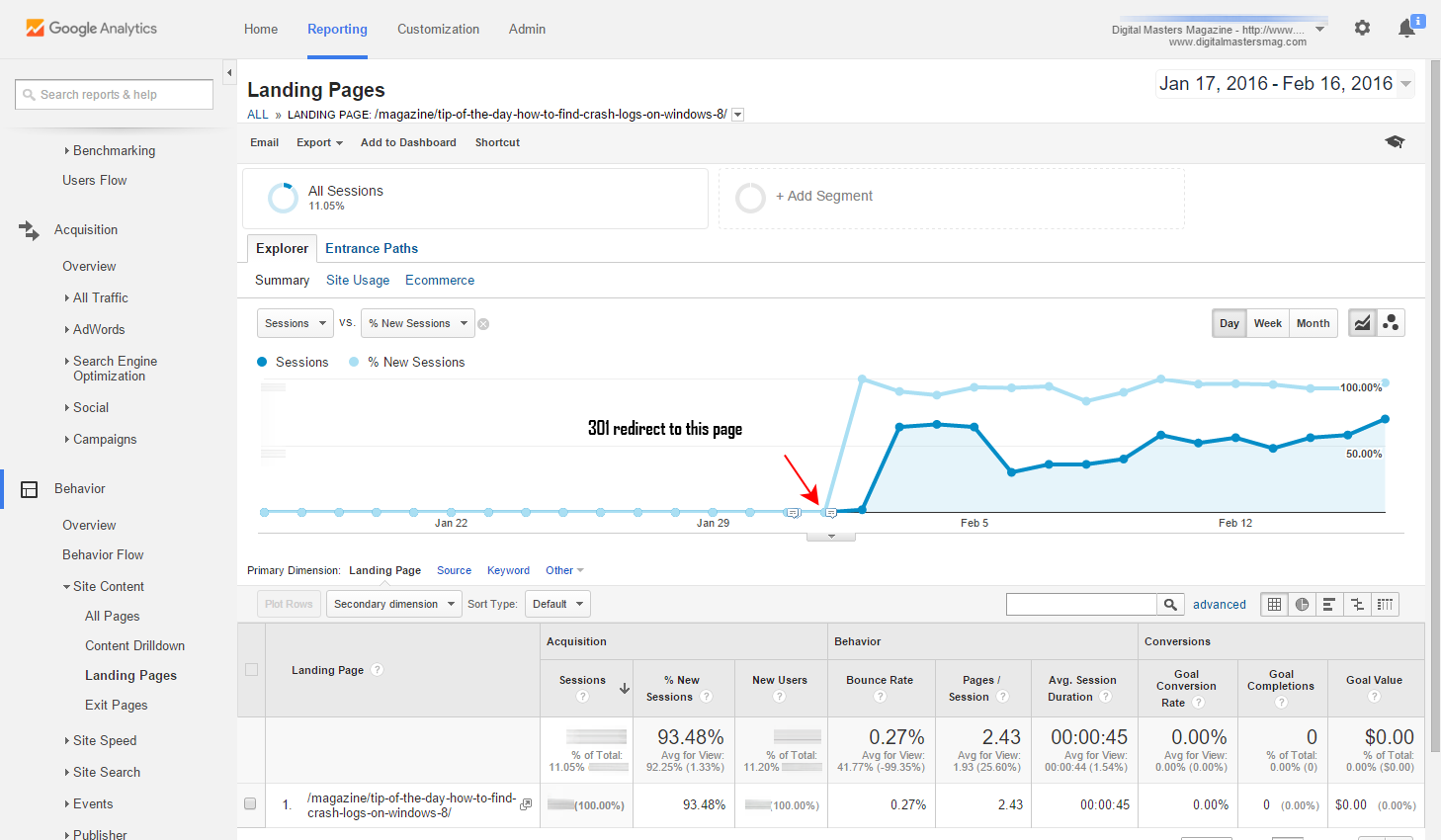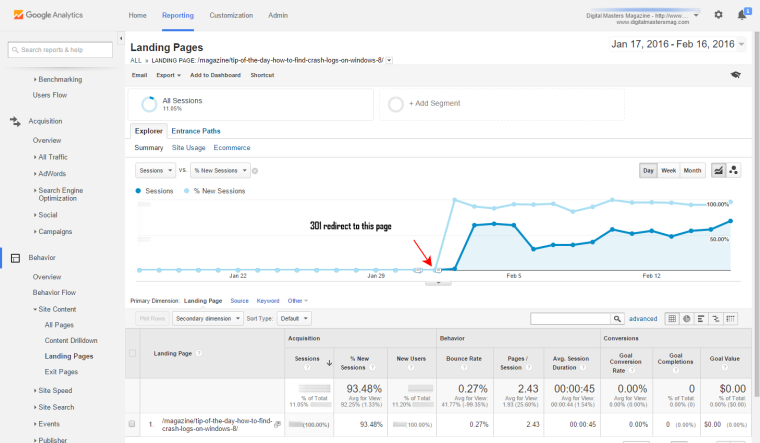If you had to implement a bunch of permanent redirects (301) you may wonder if Google is respecting them. This is of paramount importance for your SEO rank, as Google is known to penalize content duplicates. When the SEO karma of a page is split due to duplicates, the ranking of all URLs tanks.
You may still be seeing legacy page URLs in Google Webmaster Tools as if no redirect had ever been put in place. These discontinued, legacy URLs seem to keep generating page views at a lower page rank no matter what you do. Unnerving, isn’t it? The question is: how do you find out if there is anything that can or needs to be done?
The easiest way to verify whether the web server is sending a 301 redirect for any particular resource (or something entirely different is happening) is to view the HTTP headers it is sending for the URI (see this post for details on how to do this). Once you confirm that a 301 redirect is indeed in place use the content drill-down feature in your web analytics suite of choice to view user activity.
Confirm redirect
In Google Analytics, navigate to Behavior > Site Content > Landing Pages for your site, find the old version and the new version of the URL you are concerned about, and look at a time frame that includes your original setup of the redirect.

If the old page no longer shows any page views while the new URL performs at a comparable (or even a higher) level, everything is working fine and you have nothing to worry about. Relax.

If you would like to verify that your redirects for NGINX are up to snuff, see this post:
RegEx Bliss: Set Up URL Redirects in NGINX Using Regular Expressions without Rewrites!

Good day! Do you use Twitter? I’d like to follow you if that would be okay.
I’m undoubtedly enjoying your blog and look forward to new updates.
Hi Marilyn, Thank you for your encouraging words. Yes, we are on Twitter, handle: @4digitalU. Let’s stay in touch!
You are in digital marketing. That’s a growing industry, and one that we dearly love!